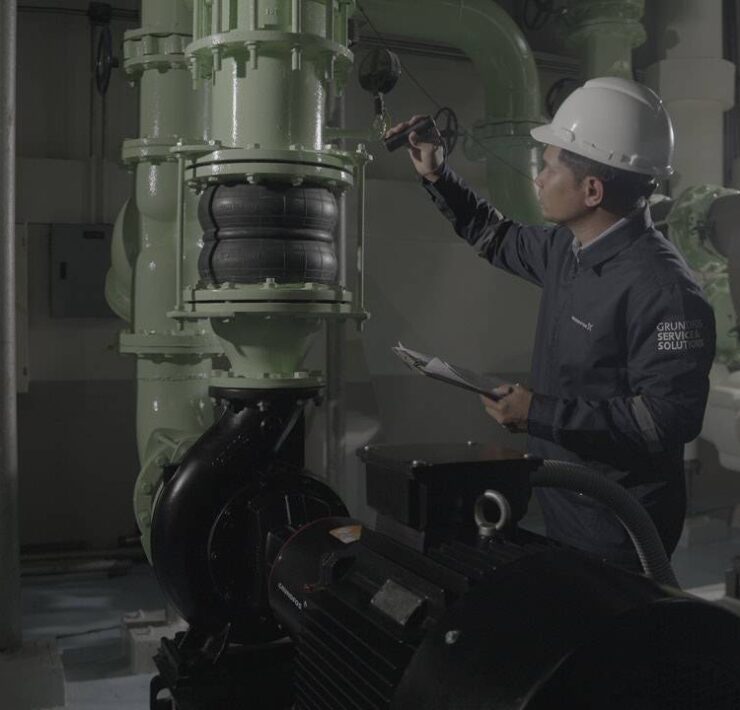Role of EVs in the future of a sustainable automotive industry
The recent Conference of the Parties (COP) 28 concluded in Dubai this December 2023 with an agreement among nations to transition away from fossil fuels. While the discussions in COP 28 did not specify what this means for the automotive industry, one can only wonder whether this would compel countries or automotive companies to drastically shift towards electric vehicles (EVs). The transportation sector produces more than seven billion metric tons of Carbon Dioxide (GtCO2) a year, with cars and vans being the biggest emissions source accounting for 48 percent of global transportation emissions (Tiseo, I., Statista, 2023).
Parallel to COP 28, the High Level Champions and the Marrakech Partnership compiled the “2030 Climate Solutions: Implementation Roadmap” specifying targets for road transport, which include among others, zero emission vehicles (ZEVs) as being the new normal by 2030 and ZEVs making up 100% of total global passenger vehicles and vans sales by 2030. The 2030 Climate Solutions summarize actions required to achieve systems change by 2030 as pathways toward a global net-zero, resilient and nature positive world.
2030 is about six years away. A shift to 100% ZEVs of total global passenger vehicles by 2030 seems ambitious, but understanding the effectivity of ZEVs as a definitive path to an emissions-free or sustainable future is fundamental for having the impetus to pursue this ambitious goal.
Even before COP 28 was held in 2023, some jurisdictions already adopted aggressive targets. The State of California requires that ALL new cars sold in 2035 and beyond have to be ZEVs. In Britain, at least 22% of car manufacturers’ sales must be electric by 2024. This threshold increases to 25% by 2025, 80% by 2030, and 100% by 2035. Each internal combustion engine (ICE) sale that breaches the quota is subject to a fine of £15,000. In Europe, an EU Law mandates that all new cars sold beginning 2035 must have zero CO2 emissions.
Several automotive companies have followed suit and taken on their own ZEV strategies. General Motors (often associated with gas-guzzling vehicles) announced plans to move to all electric vehicles (EVs) by 2035. BMW Group declared that by 2023, at least half of their global deliveries will be fully EVs. MINI and Rolls Royce have also announced their intention to have an all-electric model line-up by the early 2030s.
Applying the definition of the California Air Resources Board, ZEVs include battery EVs, plug-in hybrid electric vehicles (PHEVs), and fuel cell electric vehicles (FCEVs). While ZEVs are considered to produce little or no greenhouse gas (GHG) tailpipe emissions, the manufacture and use of ZEVs can be sources of emissions. The level of EV emissions, in particular, are significantly driven by their batteries and energy sources.
The production of batteries for EVs require the mining of minerals and a process of heating at high temperatures which usually involve the use of fossil fuels. Because of the intense requirements to manufacture batteries, MIT Climate (using Argonne National Laboratory’s GREET Model) estimates that building a new EV can produce around 80% more emissions than building a comparable gas-powered car.
The energy used to power EVs primarily determines the level of emissions produced. If the EV is constantly charged using electricity from coal or other fossil fueled power plants, it becomes a source of GHG emissions during its lifetime. However, EVs are effective alternatives to reduce emissions if its power sources are from renewable energy.
Considering the drastic variations in EV emissions, influenced by other factors such as the battery manufacturing process and available sources of energy, strategies for climate solutions should consider the peculiarities of a given area.
Indonesia’s power generation, for example, is heavily dependent on fossil fuels with coal generating over 60% of its energy requirements. Thus, switching the Indonesian market to EV vehicles might not be an emissions-efficient solution if its power mix is not altered.
The Philippines imposed a moratorium on new coal-fired power plants in 2020 and adopted a policy to increase the share of renewable energy in the power generation mix to 35 percent by 2030 and 50 percent by 2040. EVs also get a host of incentives such as tax exemptions, number coding scheme exemption, and motor vehicle user charge discounts. Currently, however, the Philippines faces an energy shortage and has one of the highest electricity prices per kilowatt hour (kWh) in Southeast Asia. If there was a massive shift to EVs, the addition of the road transport sector to the demand for electricity (coupled with the lack of mass transit solutions) could deprive critical sectors (such as agriculture, manufacturing, medical, and low to middle income housing) of affordable energy; or access to electricity and to maintaining EVs can be cost prohibitive.
This brings to the fore a relevant issue raised at COP 28 by Harjeet Singh, head of global political strategy at Climate Action Network—”developing countries still dependent on fossil fuels are left without robust guarantees for adequate financial support in their urgent and equitable transition to renewable energy.”
While funds like the Least Developed Countries Fund and Special Climate Change Fund are supposed to help countries with insufficient capacities, the United Nations Climate Change News notes that the existing financial pledges “are far short of the trillions eventually needed to support developing countries with clean energy transitions.”
By 2025, nation parties are encouraged to have more ambitious, economy-wide emission reduction targets covering all sectors in their Climate Action Plans or Nationally Determined Contributions.
In charting the future of the automotive industry, policymakers should avoid oversimplifying action plans to merely forcing a shift by automotive manufacturers and consumers to EVs without considering other related factors (such as available electricity sources, available infrastructure to support maintaining and operating EVs). Other social and environmental factors should also be considered. There might be unforeseen social impacts such as inequitable access for lower income groups due to electricity or other costs. Mining (which becomes essential to obtain lithium, nickel or other minerals used for EV batteries) may also have other social risks such as displacement of communities, loss of land, and health hazards. While the Paris Agreement is mainly focused on addressing climate change and limiting global warming, other impacts on the environment may be overlooked. What would be the impact of increased mining activity on biodiversity, conservation, and our ecosystems?
Despite the potential disadvantages of EVs, its benefits are real and seem to carry more weight when it comes to emissions. The same MIT Climate study (that estimates greater emissions impact of producing EVs vs. ICE vehicles due to the intense lithium battery manufacturing process) also states that emissions numbers from EVs in countries that get most of their energy from coal are still on par with, or better than, ICE vehicles.
Based on current available technologies, EVs are crucial to a sustainable future for the automotive industry. But sustainability can’t be achieved by simply focusing on replacing ICE vehicles with EVs. There appears to be wisdom in strategies undertaken by companies like Toyota on having a “multiple pathway approach” to sustainability. A holistic analysis is important to avoid defeating the goals of sustainability which go beyond solving emissions and global warming, but also considers other aspects of the environment and social well-being.



















